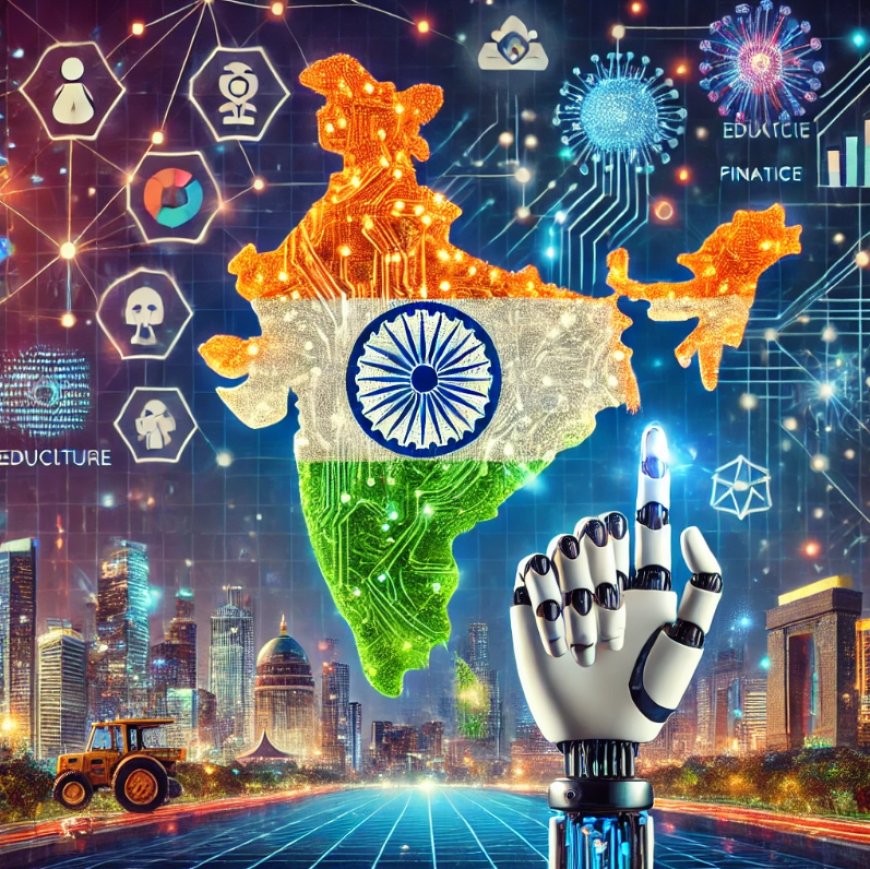AI and Machine Learning in India: Growth, Applications, Challenges & Future Trends
The Rise of AI and Machine Learning in India: Transforming Industries and Driving Innovation

AI and Machine Learning in India
Introduction
Artificial Intelligence (AI) and Machine Learning (ML) are revolutionizing various industries in India. From healthcare to finance, education, and governance, AI and ML technologies are playing a crucial role in enhancing efficiency, accuracy, and decision-making capabilities. With the government's initiatives and the rise of AI-based startups, India is rapidly emerging as a global AI hub.
Growth of AI and ML in India
India has seen exponential growth in AI and ML applications over the last decade. According to a report by NASSCOM, India's AI market is expected to reach $7.8 billion by 2025. Major tech companies, research institutions, and startups are investing heavily in AI development.
Key Factors Driving AI Growth in India
-
Government Initiatives – Programs like Digital India, AI for All, and National AI Strategy aim to integrate AI into various sectors.
-
Rise of AI Startups – Startups like Haptik, SigTuple, and Niki.ai are leading innovation in AI-powered solutions.
-
Availability of Data – With the increase in smartphone and internet penetration, India generates vast amounts of data essential for training AI models.
-
Skill Development – Institutions like IITs, IIITs, and private firms are offering specialized AI and ML courses.
Applications of AI and ML in India
-
Healthcare – AI is transforming diagnostics, predictive analytics, and robotic surgeries. Platforms like Qure.ai and Niramai use AI for medical imaging and cancer detection.
-
Finance – Banks and financial institutions use AI for fraud detection, risk assessment, and automated customer support (chatbots like HDFC’s EVA and SBI’s SIA).
-
Education – AI-powered EdTech platforms like BYJU’S and Unacademy personalize learning experiences for students.
-
Agriculture – AI-driven solutions help farmers with crop monitoring, pest detection, and yield prediction.
-
E-commerce and Retail – AI enhances customer experiences through chatbots, recommendation systems, and personalized marketing on platforms like Amazon, Flipkart, and Myntra.
-
Smart Governance – AI is used in facial recognition, crime detection, and traffic management to improve law enforcement and city planning.
Challenges in AI and ML Adoption in India
-
Data Privacy and Security – With increasing AI applications, concerns regarding data misuse and cyber threats are rising.
-
Skill Gap – There is a shortage of skilled AI and ML professionals in India.
-
Infrastructure Limitations – AI requires high computing power and storage, which can be expensive for small businesses and startups.
-
Regulatory and Ethical Concerns – AI decision-making in sensitive areas like healthcare and finance raises ethical issues.
Future of AI and ML in India
India’s AI future looks promising with continuous advancements in research, policies, and investments. The National AI Portal (indiaai.gov.in), collaborations with global AI leaders, and a growing talent pool will drive India’s AI ecosystem forward. With sustained efforts, India has the potential to become a leader in AI and ML globally.
Conclusion
AI and Machine Learning are reshaping India’s technological landscape, providing innovative solutions across various domains. With government support, startup culture, and increasing adoption, AI will continue to drive digital transformation and economic growth in India. However, addressing challenges like skill gaps, data privacy, and infrastructure will be crucial in realizing AI’s full potential.











































































































































































































